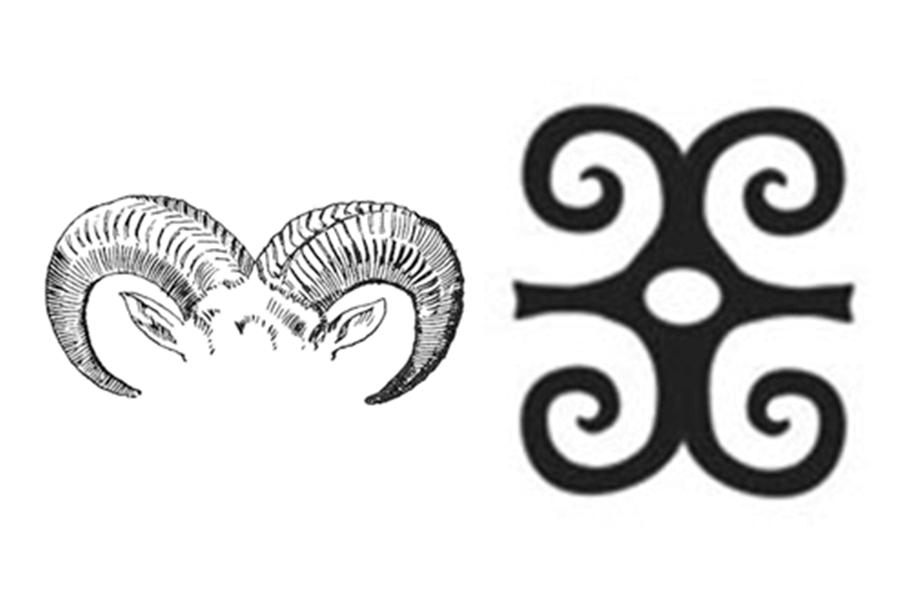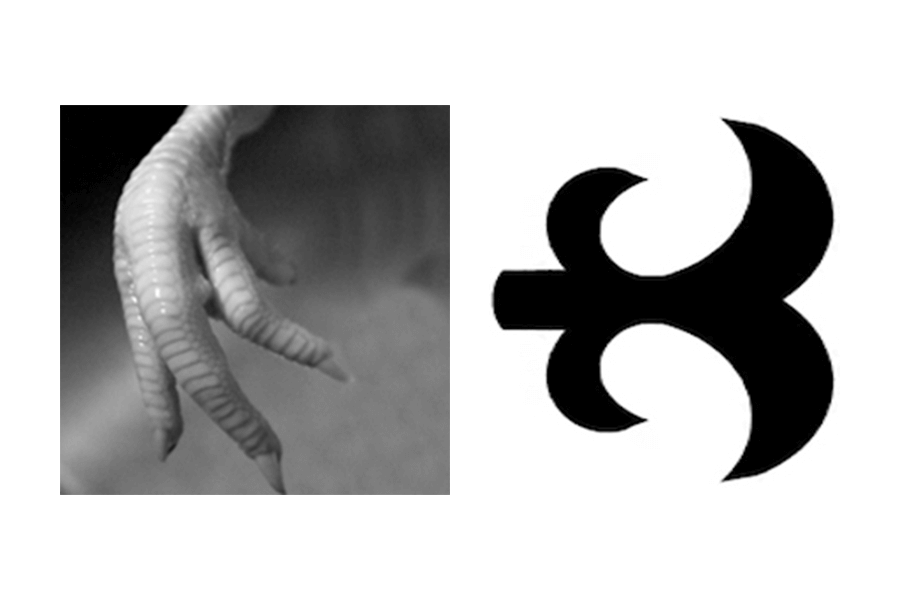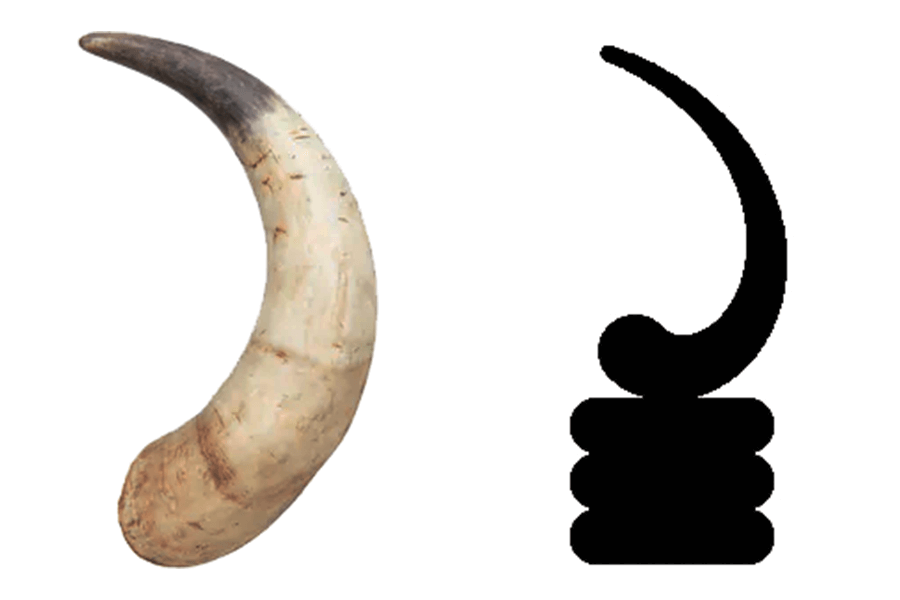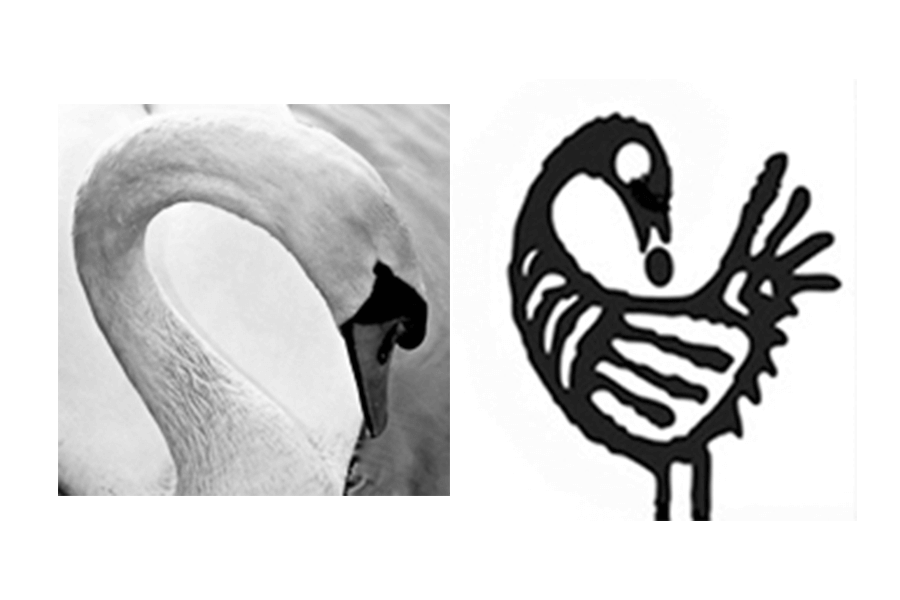Adinkra Spirals
Adinkra symbols show traditional African ideas about geometry. Here we see two kinds of spirals. A coil of rope is a linear spiral. The space between each revolution is the same. Ropes are dead, they do not grow.
In contrast, the snail's shell is a logarithmic ("log") spiral. As the snail grows, its shell gets larger. Log spirals are growing spirals, so that is why they are used by nature. All living things must grow.
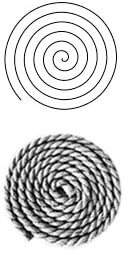
Rope coil as a linear spiral
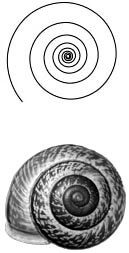
Snail shell as log spiral
The log spiral is the most common shape in Adinkra symbols. Can you guess why? Click below for some hints:
Click here for the answer...
Animal horns are not the only logarithmic spiral from nature. Many shapes created by living organisms can be modeled using a log spiral. Some have several full revolutions, like the snail shell. Others are just a small section (arc of a spiral), like the chicken's foot.
Comparing the African and European Discovery of Log Spirals
The adinkra symbol Sankofa ("san-KOH-fah") shows a bird looking backwards. It means “You can always go back.” It is often a symbol for recovering cultural knowledge lost from colonialism or slavery.
The Sankofa symbol comes in two different versions. The first one looks like a natural bird. If we trace the outer edge, we see a log spiral. Below we see the abstract version of the same symbol. The bird is removed, so only the spiral remains in the abstract version. Note that they added reflection symmetry.
Now we know how Ghanaians discovered log spirals: by looking at nature. How did Europeans discover the log spiral? In 1637, Rene Descartes wrote a famous letter in which he describes the log spiral. But he describes it as “mechanical motion” (think of peeling fruit with a knife, starting from the top). Other mathematicians applied the log spirals to mechanical things like springs and ship's anchors. Europeans did not apply log spirals to nature until Sir John Leslie wrote Geometry of Curve Lines in 1813, almost 200 years after Descartes.
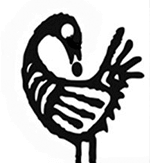
Sankofa Adinkra

Sankofa With Added Curve

Abstract Sankofa
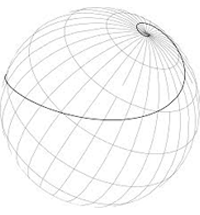
Descartes' spiral
In other words, Africans started with log curves representing nature. Europeans took 200 years to get there. Recall the section on making adinkra ink from tree bark: it does not kill the trees, and the bark collectors protect the forest. In contrast, the mechanical focus of Europeans created factories that destroyed trees and forests. It is not that Africans lacked math and technology. It is that their approach is so different that Europeans did not even recognize it as math. It is based on respectful relations with nature and people. The Europeans called that “primitive”. It did lack equations, but in other ways it was more advanced.
The goal of our website is not to say that one culture's math and science is better than another's. If we do that, we just become the mirror image of the colonial approach. Revenge and tit-for-tat never solves problems. Rather, we want to encourage a future where Indigenous knowledge and modern science can work hand in hand. Innovation needs to be open to contributions from everyone. One name for that approach is “ethnocomputing”. By using the simulation tools on this website, you can create your own ethnocomputing investigation.
Dwennimmen
Geometry that Reminds Us Not to Bully


This Adinkra symbol, Dwennimmen ("GEN-ah-men") is a good example. It shows four log spirals. The spirals are in pairs because this represents two rams butting heads. Its proverb says: “it is the heart, and not the horns, that leads a ram to bully.” In other words, we have to take responsibility for our actions. Being a big person does not give you an excuse to push people around. Notice that symbol makes use of the log spiral, just like the real ram's horns.
Gye Nyame
The Curves of Life
Recall that the other adinkra symbols with log spirals were representing shapes of living things: Dwennimmen is based on the ram's horn; sankofa on the bird's neck; Akoko nan on the chicken's foot; and Akoben on the horn of a bull. But what do the logarithmic curves of the Gye Nyame symbol represent?
The knobs down the middle of the symbol represent the knuckles on a fist, a symbol for power. The full meaning of the the Gye Nyame symbol is, "No one except God has the power of life." The curves at each end are not representing any one particular living shape. Rather, they are a general abstraction for life itself. Developing a general abstraction that fits all cases is the fundamental goal of science. Log curves are just one example of power laws in biology. Others include fractals and exponential scaling: these are still active areas of research. For more about the reason we see power laws in biology, click here.
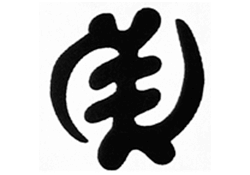
Gye Nyame ("jeh N-yah-mee")
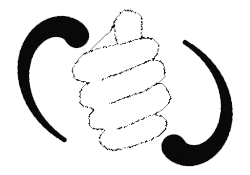
How Tightly Coiled?
Adinkra Makes Use of Different Spiral Shapes
Adinkra carvers speak Twi. They say that some spirals are aboapua awan or “tightly coiled.” Others are ntitim awan or “loosely coiled”. You will be using the block below to control that variable (“c” for “coil”). See if you can change C to match the spiral shape. After you enter the number, click on the blue button. (Hint: stay between 0.1 and 2.1)
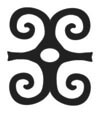



Try entering a number between 0.1 and 2.1.
